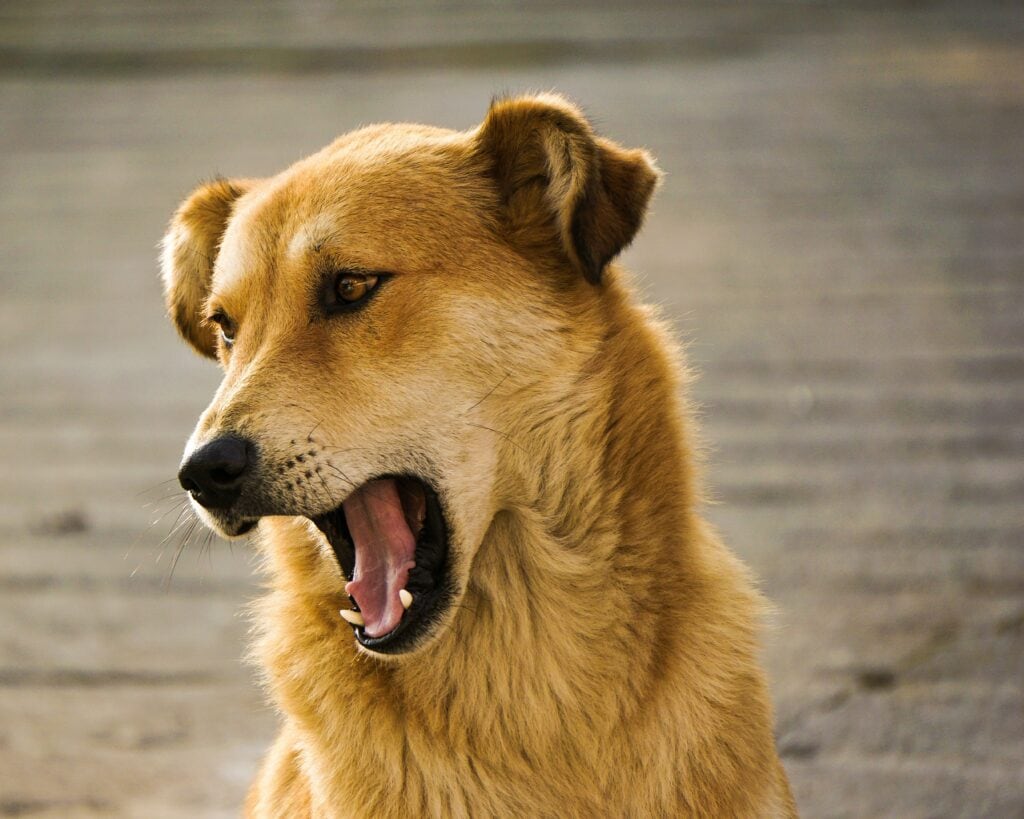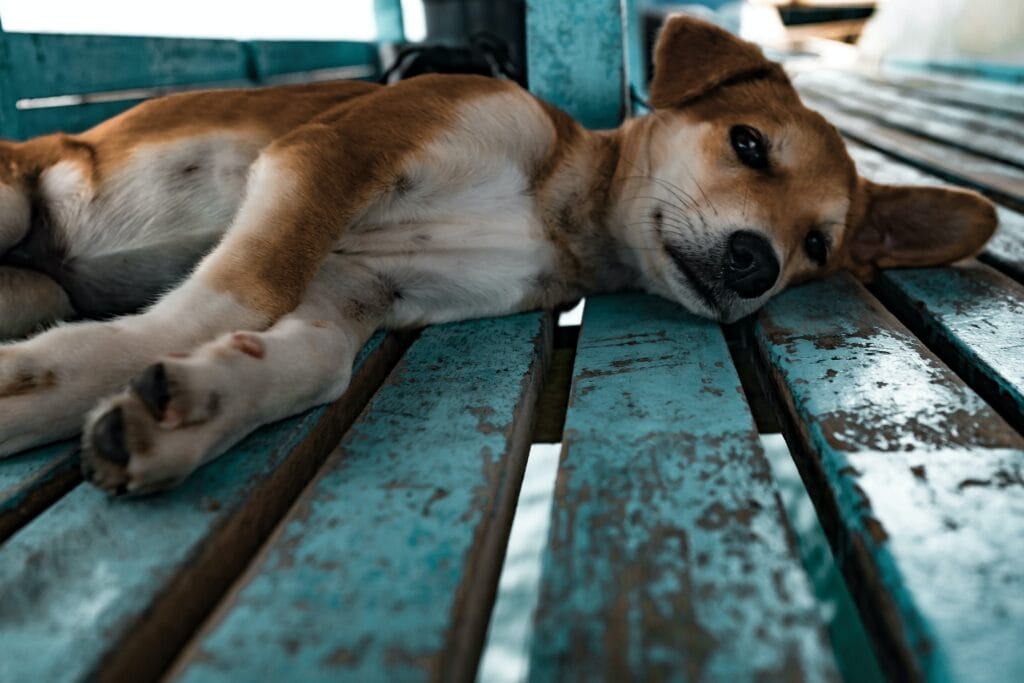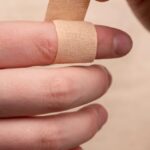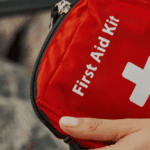Dogs are wonderful creatures, and it can be hard to watch them in pain. They can easily get into trouble with so much energy and excitement. Some canine shenanigans and overexcited play can lead to scratches, injuries, and minor burns.
Unfortunately, what may look like a small wound on your dog is often full of bacteria and debris. Dog wounds are especially susceptible to infection. Therefore, properly cleaning them is important to help them heal and prevent further health complications. In addition, you may need to treat minor pet wounds without reporting them to the vet.
Proper wound cleaning will prevent infection. It will also ease the task for a veterinarian to determine how severe your dog’s injury is.
Knowing the type of wound can help treat it better. Therefore, this article identifies the wound types and gives the steps to treat dog wounds effectively.
Dog Wounds Types
-
Abrasion
Scraps are a common type of wound in dogs. They are shallow injuries dogs get when they rub hard against rough surfaces. Although they are minor wounds, they are painful and may bleed. But they are generally not as serious as other types of wounds, like lacerations or puncture wounds.
-
Burns
There are three main types of burns: thermal, chemical, and electrical.
Thermal burns come from heat, for example, fire or hot water. Chemical burns are from acidic or caustic substances like bleach. Electrical burns come from contact with electrical current.
Dogs may have red or swollen skin, blisters, and pain when they experience burns. If you suspect your dog has a burn, it’s advisable to contact a vet immediately. In the meantime, you can try cooling the burn with cold water.
-
Lacerations
A laceration usually results from sharp objects, falls, or accidents leading to open wounds in dogs. Lacerations can be serious injuries and may require immediate medical attention. Symptoms of a laceration in a dog may include pain, swelling, and bleeding.
-
Degloving
Degloving is a type of injury in which the dog’s skin is completely torn away from the underlying tissue. It is common in dogs who have been hit by cars or involved in other types of traumas, such as falls or fights with other animals. Degloving injury in a dog may lead to exposed muscle or bone, severe bleeding, and severe pain. It requires urgent attention to avoid serious infections.
-
Puncture Wounds
Puncture wounds are caused by a sharp object piercing the dog’s skin. They can also be bite wounds from other animals. Symptoms of a puncture wound in a dog may include bleeding, swelling, and pain. The bite wound may also be deep enough to expose underlying muscle or bone.
-
Surgical Wounds
Surgical wounds result from surgical procedures. Usually, surgical wounds in dogs require special care to ensure proper healing.
After a surgical procedure, your dog’s surgical wound will be covered with a bandage or dressing to protect it and promote healing. The vet will provide instructions for caring for the wound at home.
Basic care may include keeping the wound clean and dry, monitoring the wound for signs of infection, and administering any prescribed medications. Following these instructions carefully is crucial to ensure proper healing.
How to Clean a Dog Wound in 6 Steps
-
Stop the Bleeding
Trying to stop the bleeding quickly is essential. It is first important to apply pressure on the wound. Firmly press the wound with a gauze pad or clean cloth. This can help clot the wound.
Use a tourniquet only if the bleeding is severe and direct pressure is not working. You should only use one in extreme cases and should release it every 15-20 minutes to allow some blood flow to the limb.
-
Shave the Fur Around the Wound
If you have a dog with long hair, it may be necessary to trim it back. Shaving the hair helps you to treat a dog’s wound safely. It is best to use clippers. However, you can use scissors if you do not have clippers. But be sure not to cut too close to the skin as this may increase the risk of further injury.
Removing excess hair around the wound will give you a better view of the injury. As a result, dirt and debris will not get stuck in the fur, irritating the exposed skin.
-
Wash the Wound With Warm Water
 If a dog’s wound is dirty or debris-filled, it can be effectively cleaned by flushing warm water over the wound. It is necessary to prepare a bowl of warm water, a clean piece of cloth or a gauze pad, and mild soap for the task. You can use salt water, but fresh warm water will suffice.
If a dog’s wound is dirty or debris-filled, it can be effectively cleaned by flushing warm water over the wound. It is necessary to prepare a bowl of warm water, a clean piece of cloth or a gauze pad, and mild soap for the task. You can use salt water, but fresh warm water will suffice.
Use the gauze pad to gently clean the area around the wound to remove any dirt or debris. Then hold the bowl of warm water close to the wound so that the water flows directly into the wound. Use a clean cloth to gently flush the wound with warm water.
You avoid forcing the water into the wound. When you are confident the wound is clean, rinse off any soap or debris with clean water.
-
Disinfect the Wound
Betadine (povidone-iodine) and Nolvasan (chlorhexidine) are great antiseptic solutions to clean and disinfect dog wounds. These solutions can help to get rid of infectious microorganisms.
You can complete this step with the previous step by diluting Betadine or Nolvasan in a bowl of warm water. Remember, hot water can cause discomfort to your dog, so use only warm water.
Follow the instructions on the label to determine the appropriate amount of solution to add to the bowl of warm water. Then use a clean spoon to stir until you are confident it is well mixed.
-
Dry the Wound
A sterile gauze is ideal for a dog’s wound because it is free from contaminants. Also, there is a lesser chance it can cause infection to the wound. However, any clean, absorbent material will do if a sterile gauze is unavailable. This can include a clean cloth or a clean paper towel.
Gently handling a dog’s wound is important to avoid causing further pain or injury while drying the wound. Instead of rubbing or scrubbing the wound, it’s best to pat it gently. This can help to minimize discomfort and avoid further damage to the wound.
-
Apply Antibiotics
You can use an antibiotic ointment or spray on the dog’s wound. This will prevent infections. Antibiotics that are safe for humans will do. However, ointments and creams can attract dirt to the wound. In addition, your dog can lick them.
You can use protective gauze or an Elizabethan collar to cover the treated area and prevent the dog from bothering the wound. If you have any concerns about using an antibiotic cream or spray on your dog’s wound, it’s important to consult with your veterinarian. They would know the best treatment and care for your dog’s specific needs.
Other Tips for Dog Wound Care
- You may need to muzzle your dog during the treatment. This is to keep you safe from unexpected aggression resulting from pain.
- It would be best if you did not allow your dog to lick or chew on wounds that are still open.
- When cleaning an open wound, avoid using soaps or shampoos. Also, avoid rubbing alcohol or hydrogen peroxide.
- Avoid ointments that contain hydrocortisone or betamethasone. It is best to use only antibacterial ointment if you need to use any.
- Always keep a pet first-aid kit to treat a minor wound.
- To ensure that your pet receives proper treatment, contact your veterinarian immediately.
Conclusion
Cleaning a dog’s wound is an important step in the healing process. Proper wound care can help to prevent infection and promote healing.
To effectively clean your dog’s wound, it is best to use warm water to flush the wound. Then use an antiseptic solution to soak and rinse the wound. Furthermore, sterile gauze is an ideal choice for covering healing wounds. But other clean, absorbent materials should do the trick if you can’t get any.
Overall, you should contact a vet as soon as you can. You can then ensure that your dog receives the appropriate treatment based on the circumstances.





